top of page

Learnings and takeaways

-
Planning and facilitating co-design workshops to gain insights
-
Reaching out and recruiting members for research and testing
-
Navigating complexities and dealing with ambiguity
-
Importance and consideration of writing in UX design
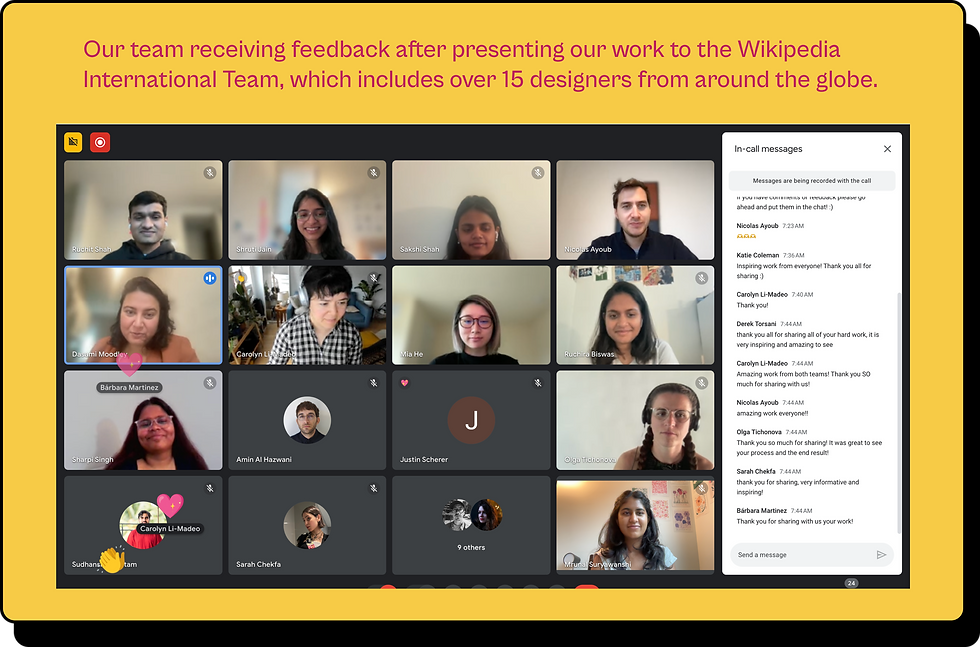

CONNECT THE DOTS- final product
At a glance
We utilized the left sidebar of the Wikipedia page to introduce our feature, designed to enhance readers' understanding. By selecting the "Dive Deeper" button, users are presented with a split screen.


Compiled resources
This section offers a synthesis of the topic through various social and civic criteria, such as key points, historical comparisons ("Then vs. Now"), and human impact. It provides a well-rounded overview, integrating diverse perspectives to enhance readers' understanding of the topic.
Timeline
When readers select "Explore More," they are presented with a visual timeline of information related to the topic.


Conversational hubs
Hubs are interactive spaces on Wikipedia where users can discuss and share insights on specific topics. They offer curated information, encourage community contributions, and facilitate diverse perspectives, enhancing understanding and engagement through collaborative discussions and a centralized collection of resources.

The process was non linear and iterative

Through usability testing, we identified user experience issues and enhanced navigation. This process ensured that users could effectively interact with the designed pages and features, leading to a more intuitive and user-friendly experience.



Finalizing the concept
Concept testing
To evaluate how fair information and talking with peers change what people think and feel about certain topics.


Feature testing
To find out if and how learning styles change with different topics and discover the best ways people like to learn new things.

Concepts exploration
We explored two primary concepts for our product aimed at helping users create informed points of view:
Learning journey
This exploration aimed to create a flexible learning path by modularizing information and allowing reader customization


Connect the dots
This exploration focused on helping different kind of readers think critically and form an educated point of view by providing them all sides of the story.
Assumptions vs reality
Value for opinion-building
They seek tools that promote critical thinking and deeper analysis, not just basic opinion-building
Desire for Diverse Perspectives
Gen Z seeks platforms that help them articulate diverse perspectives and provide the autonomy to build well-rounded opinions
Wikipedia's facts and breadth
They trust Wikimedia for providing factual and neutral information

Bridging the gap between wikipedia and the Gen Z
Wikimedia can address these challenges by leveraging the breadth and depth of information available on its open source encyclopedia. The platform's multifaceted content enables users to explore topics from multiple perspectives, helping Gen Z develop a well-rounded, educated point of view.
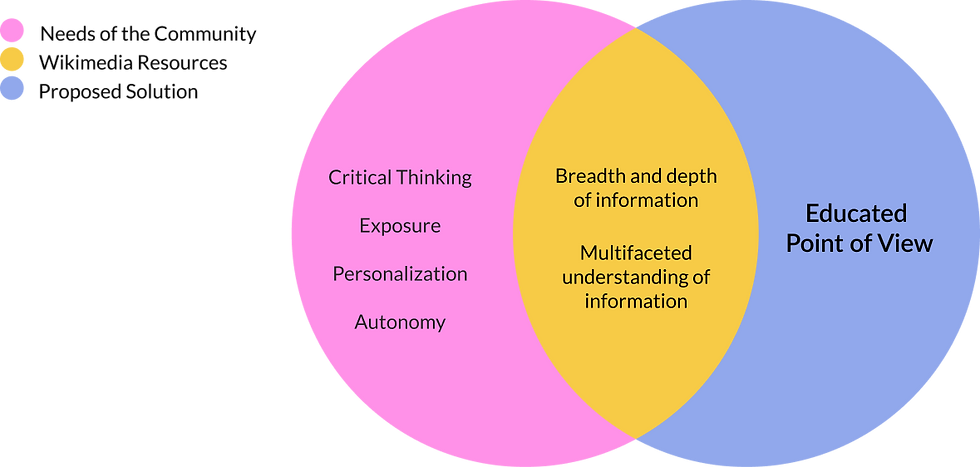
A point of view, as we define it, encompasses the following elements, each contributing to a comprehensive and informed perspective:
Getting informed
Sparking interest
Connecting with information on a personal level
Making people feel and reflect
Starting a conversation
Thinking about it critically
Connect the dots
Empowering Gen-Z to build an educated point of view using Wikipedia as a tool

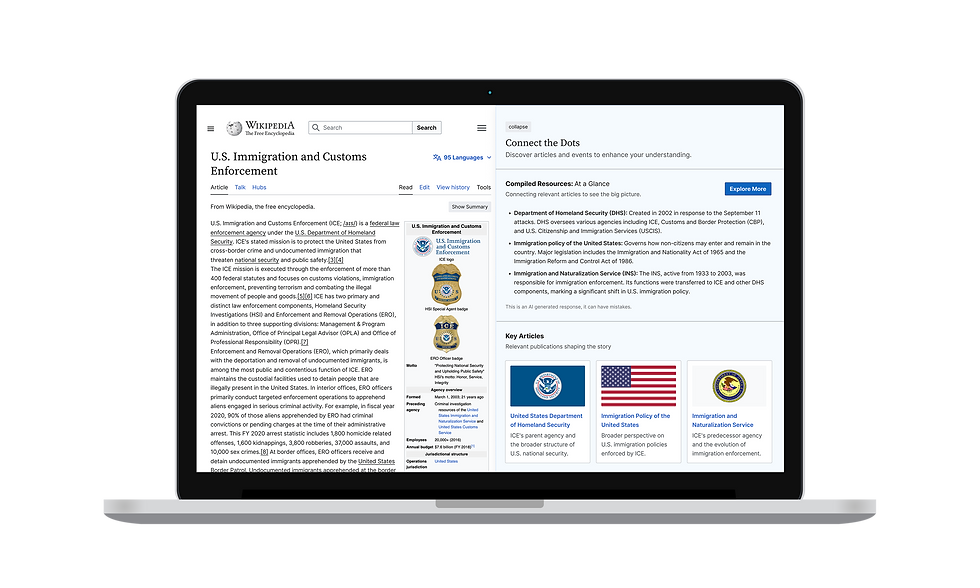

Background
In a digital landscape flooded with pool of information and unreliable sources, Gen Z's opinions are often shaped by fragmented and inaccurate content. We saw an opportunity to transform this landscape by harnessing Wikipedia's credibility and vast knowledge base to empower informed opinions. Our mission was to revolutionize Wikipedia's engagement with Gen Z by introducing a customizable exploration feature that not only captivates their interest but also nurtures critical thinking.
Roles
Design Research, Product Ideation and Design, Usability Testing, Social Innovation
Team
4 designers (Sakshi, Sharpi, Ruchira, Mrunal) Wikimedia design manager (Nicolas)
Duration
8 months

Social impact we aim to create
-
Elevating Gen Z's interaction with Wikipedia beyond passive consumption to active exploration.
-
Enhancing the credibility and relevance of Wikimedia’s offerings in the eyes of a discerning generation.
-
Providing tailored content journeys that cater to varied interests, promoting a multifaceted understanding of critical issues.
-
Equipping youth with the tools to critically assess and engage with socially relevant topics.
This initiative aims to not just increase user engagement but to instill a culture of thoughtful inquiry and informed discussion among the next generation of leaders.

The product: overview
A Wikipedia product offering to help different kind of readers think critically and form an educated point of view by providing them all sides of the story.
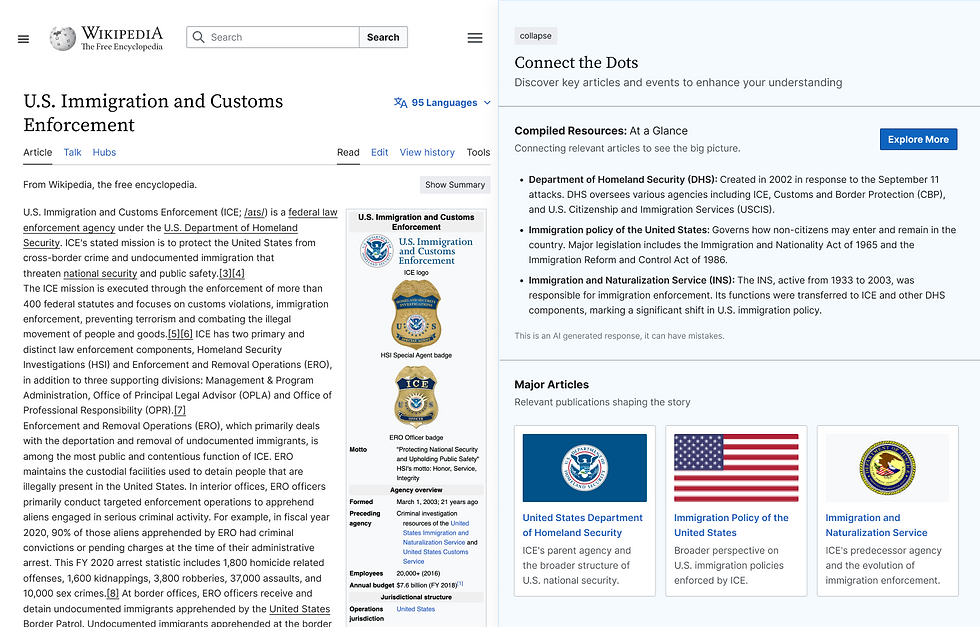
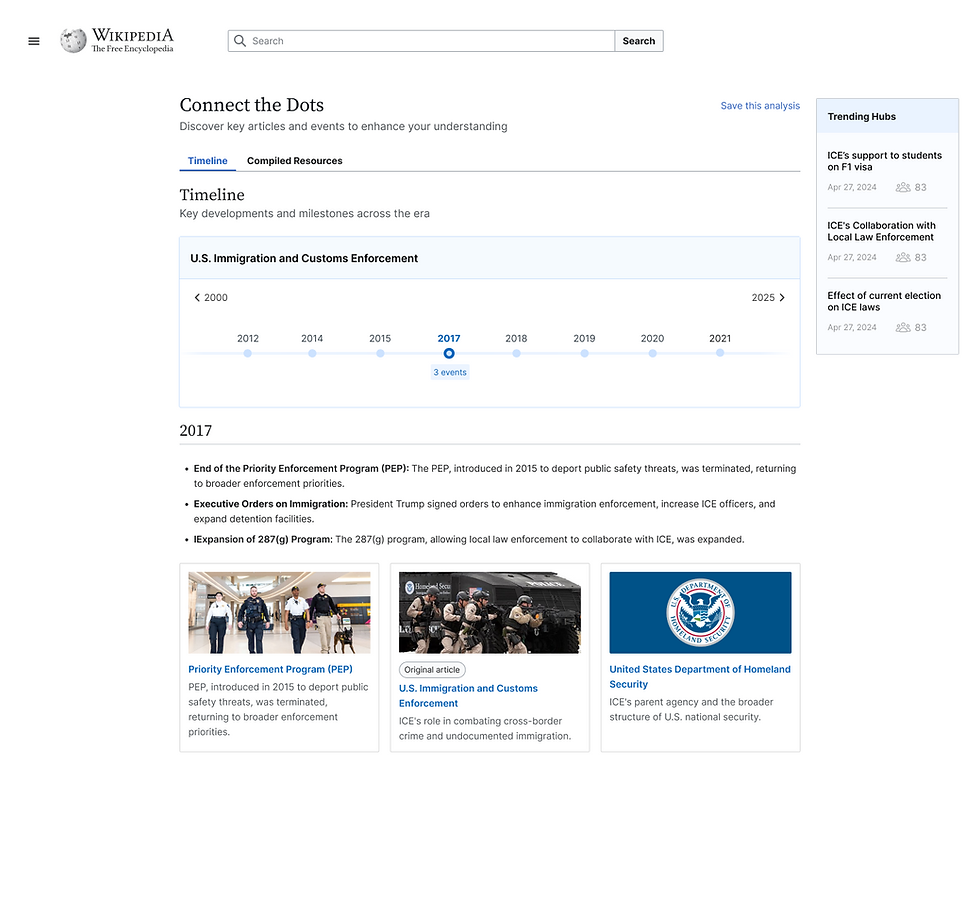

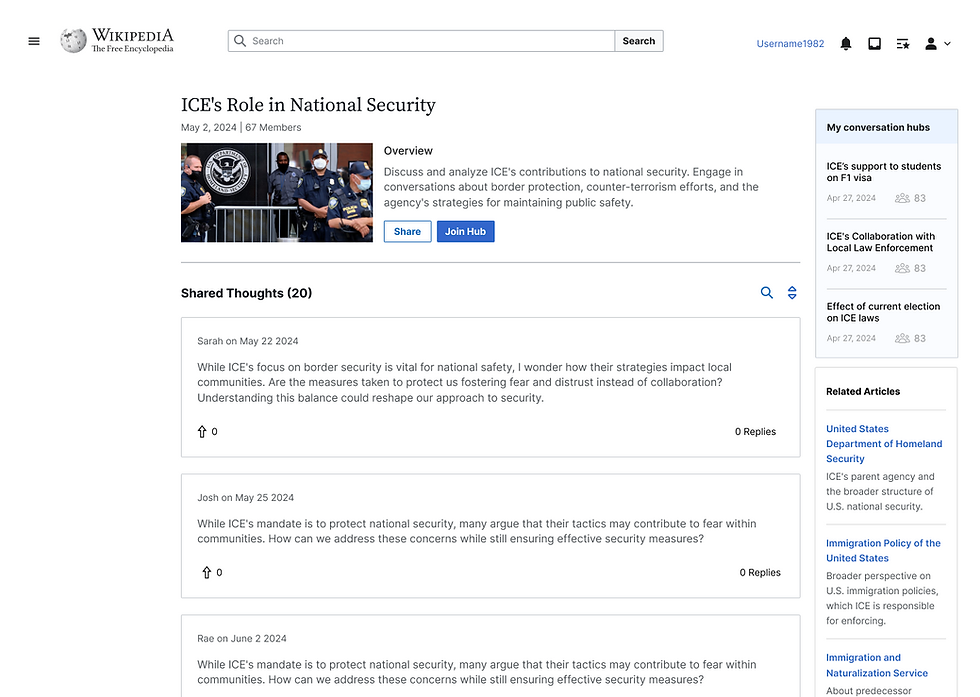

Content design and UX writing
We collaborated with content designers to refine our approach, ensuring Wikipedia's neutral standpoint was maintained. We aimed to name our feature thoughtfully, reflecting the entire process we went through. This careful naming was crucial to mitigate any potential problems or negative impacts from the content. We finalized the name "Connect Dots," aligning with Wikipedia's goal of providing a platform for users to explore all sides of a subject.


Design research

Assumptions about Gen Z’s that we tested with our research
Wikipedia's facts and breadth
They trust Wikimedia for providing factual and neutral information
Desire for Diverse Perspectives
They want to know different sides of the same story
Value for opinion-building
They believe in civic engagement and want to build informed opinions
Conducting co-design workshops
During our co-design workshops, we collaborated with participants in various activities to understand their perspectives on Wikimedia and education. This hands-on approach allowed us to gain deeper insights into their views and how they interact with educational content on the platform.

Key insights from our research
We found out that there is a gap between Gen Z’s needs and the current education system. Gen Z’s feel that the current system, does not give them:

Critical Thinking
Lack of motivation to engage in deep, analytical thought

Autonomy and
personalization
Limited ability to control and customize their own learning paths

Ability to find their voice
Unprepared to make independent decisions or discover personal goals

Well rounded viewpoints
Exposure to narrow perspectives, leading to linear thinking
bottom of page


